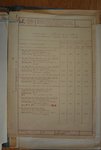Hello Delcyros
thanks for your very enlightening answer.
Yes French noticed the very long t/o runs of their He 162s, some 1200 - 2000m. T/o weight was 2713kg (5980lb). They also noted that "Considering the shape of the fuel tanks, it is adviseable to keep a safety margin of 200lit of fuel for descent and landing."
Juha
thanks for your very enlightening answer.
Yes French noticed the very long t/o runs of their He 162s, some 1200 - 2000m. T/o weight was 2713kg (5980lb). They also noted that "Considering the shape of the fuel tanks, it is adviseable to keep a safety margin of 200lit of fuel for descent and landing."
Juha
Last edited:

